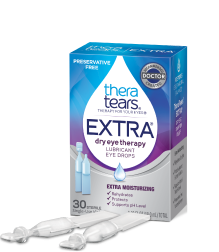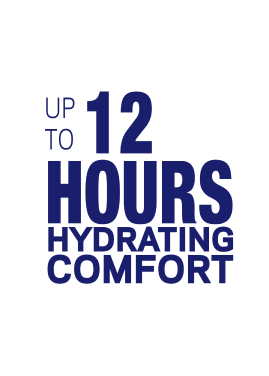Science-Backed Hydration™

What Do Dry Eyes Feel Like?
Do your eyes feel dry, itchy, sensitive, and uncomfortable? Are you constantly rubbing your eyes or blinking excessively? Then you may have dry eyes. Dry eye symptoms are very common and affect an estimated 16 million Americans.
Irritation from dry eyes can occur throughout the day or night. However, dry eyes can feel different to everyone, so you may be unsure about your condition.
If you can’t exactly pinpoint your symptoms, we’ll walk you through the most common dry eye symptoms, including what dry eyes feel like and how to find some relief in your day-to-day life.
An overview of Dry Eye
Tears serve an essential purpose for our eyes beyond letting out a good cry. Tears help wash away infections and bacteria and keep the surface of our eyes clear. They rid our eyes of foreign matter and keep our eyes lubricated, nourished, and healthy.
Dry eye can be caused by a salt imbalance in your tears. As eyes become dry, they lose water and become too salty, creating hyperosmolarity. And, just like when you throw salt on a wound, they sting and burn.
Common Causes of Dry Eye
Dry eye can result from a number of causes, including both physical and environmental conditions.
- Age – dry eye is a part of the natural aging process. The majority of people over age 50 experience some symptoms of dry eyes.
- Gender – women are more likely to develop dry eyes due to hormonal changes caused by pregnancy, the use of oral contraceptives and menopause.
- Environmental conditions – exposure to smoke, wind and dry climates can increase tear evaporation resulting in dry eye symptoms.
- Medications – certain medicines, including antihistamines, decongestants, blood pressure medications and antidepressants, can reduce the amount of tears produced in the eyes.
- Medical conditions – persons with rheumatoid arthritis, diabetes and thyroid problems, glaucoma and Sjogren’s Syndrome are more likely to have symptoms of dry eyes. Also, problems with inflammation of the eyelids (blepharitis), inflammation of the surfaces of the eye, or the inward or outward turning of eyelids can cause dry eyes to develop.
- Digital Devices – frequent use of computers and other digital devices reduces blinking and can cause dry eyes to develop.
- Other factors – long term use of contact lenses can be a factor in the development of dry eyes. Refractive eye surgeries, such as LASIK, can cause decreased tear production and dry eyes.
What does dry eye feel like?
Each person may experience dry eye differently. For example, some people describe dry eyes feeling like there’s something stuck inside their eye, like an eyelash or a fleck of dirt. Others describe it as their eyes feeling extra heavy and tired, struggling to keep them open. Some individuals feel the urge to squeeze their eyelids tightly shut or blink excessively to produce excess tears. Finally, some people experience eye crustiness or feel as if their eyes are stuck together.
Other common dry eye symptoms include:
- Scratchy or gritty feeling in the eye
- Light sensitivity
- Uncomfortable wearing contacts
- Tired eyes
- A burning sensation
- Watery eyes or excess tearing
- Blurry vision
- Eye irritation
- Extra sensitivity to wind or smoke
What does dry eye look like?
Dry eye can sometimes look like a combination of red eyes and other general irritations. For example, you may notice your eyes looking bloodshot and irritated or redness in or around the eyes. Your dry eye may look like you’re suffering from allergies.
Many individuals with dry eye claim they have stringy mucus and crustiness in the corner of their eyes. Some describe having heavy eyelids and tired eyes that distort their vision. Dry eyes will look different for everyone, but there is often a feeling of discomfort.
How do you find relief from dry eye?
If you’re not sure if you have dry eye, you should first speak to your doctor about your symptoms, especially if you have other known eye or medical conditions that could affect your eye health.
Some solutions may be right in your home—like adding more humidity to the air, especially when running the heat or air conditioning. A warm wet compress over the eyes can help as well.
A dry eye therapy regimen can hydrate and soothe your eyes and restore your eyes’ natural balance. This can include eye drops made specifically to help relieve dry eye symptoms, such as TheraTears® Dry Eye Therapy Lubricant Eye Drops, as well as using a gentle eyelid cleanser to clear unwanted irritants and bacteria from your eyelids and face. Taking an Omega-3 supplement daily helps promote healthy tears and eye comfort, helping you to have healthier feeling eyes.
Sticking to a consistent dry eye therapy routine can help to hydrate and soothe your eyes so you can get back to doing the things you love, without the distraction of uncomfortable eyes.
EXTRAordinary relief, now available in preservative free vials
TheraTears EXTRA dry eye therapy

EXTRAordinary relief, now available in preservative free vials

